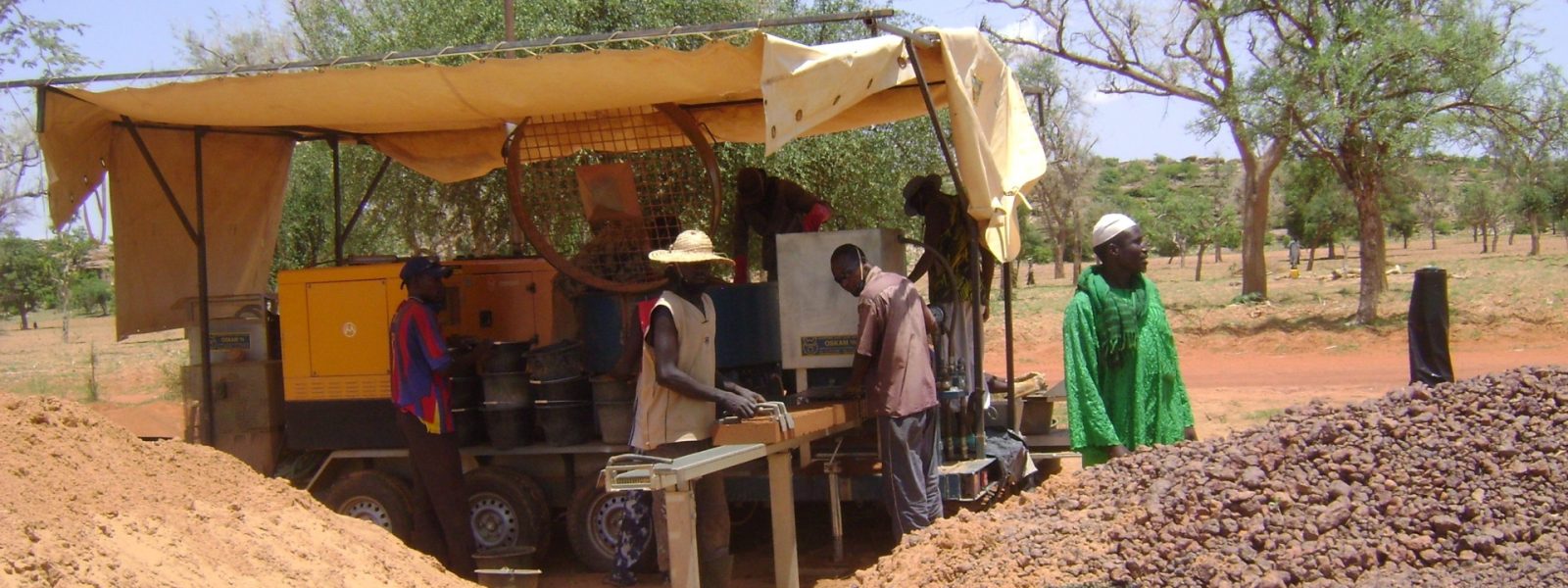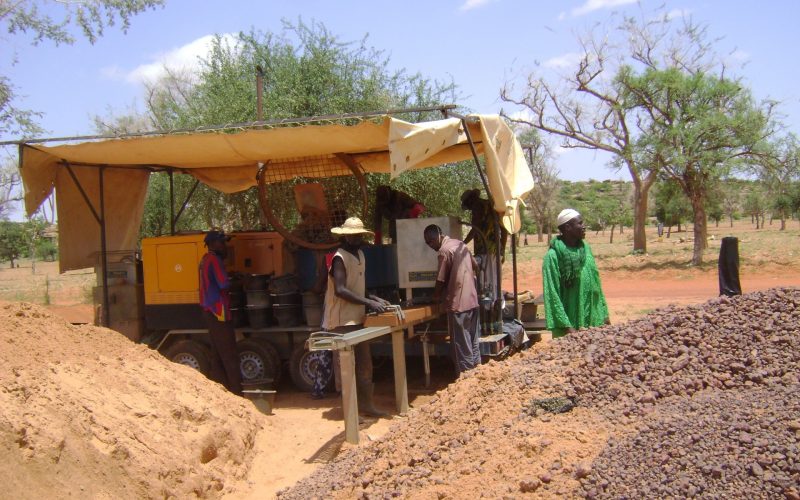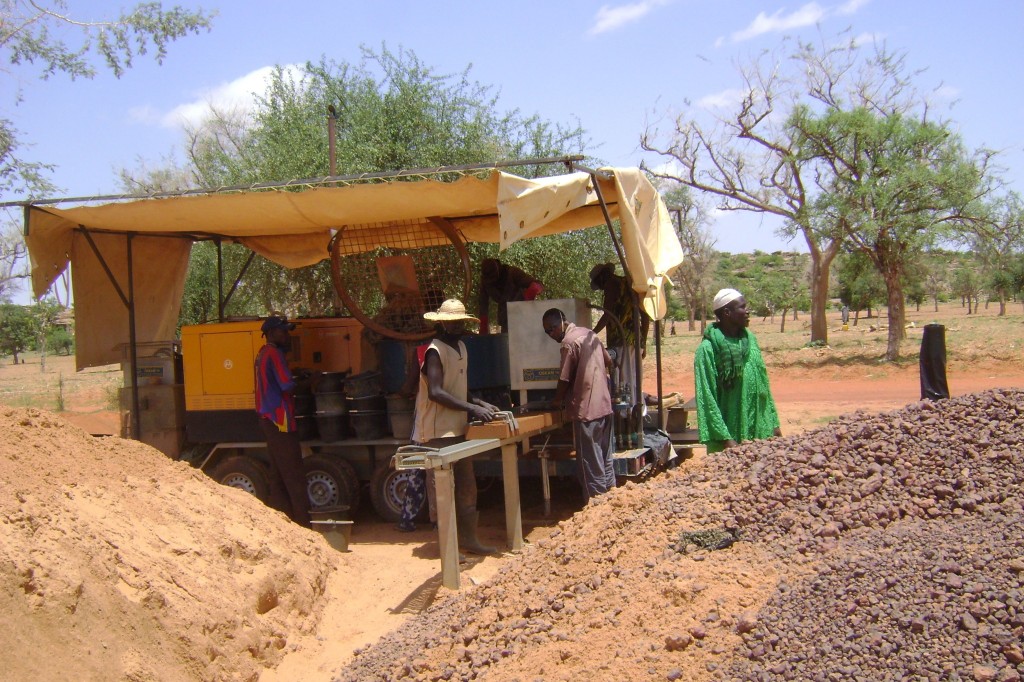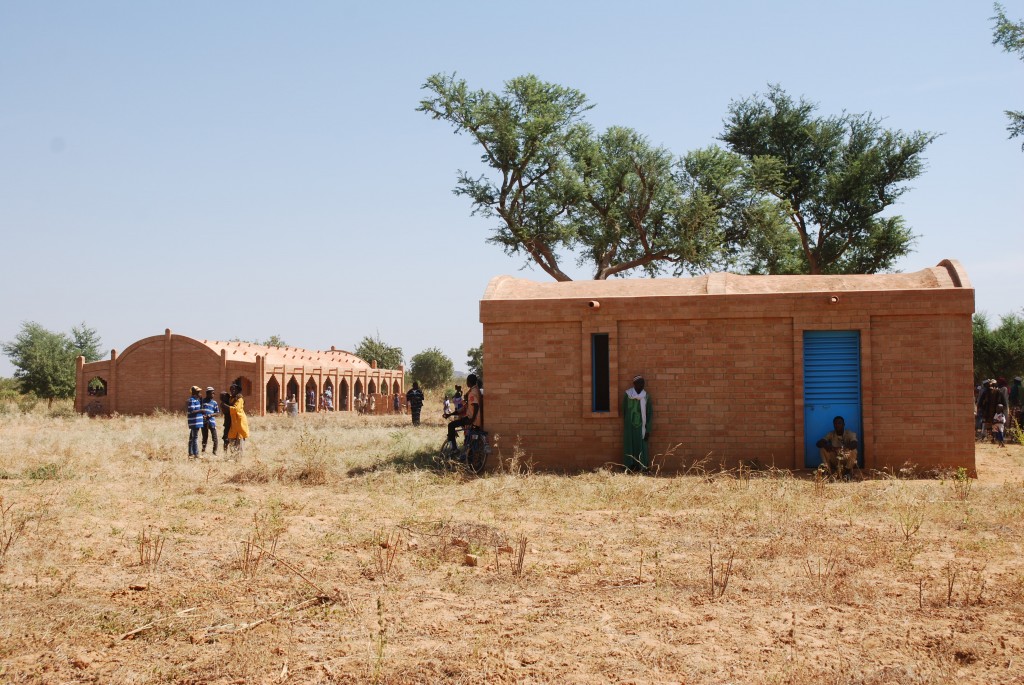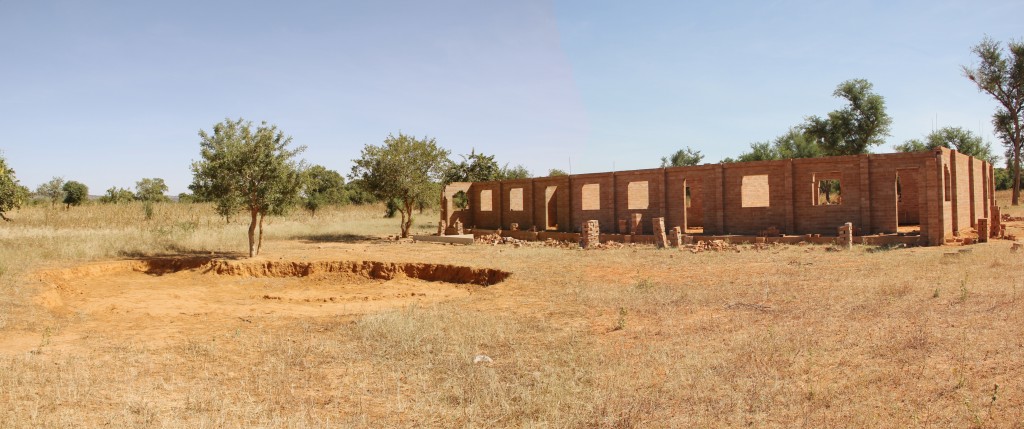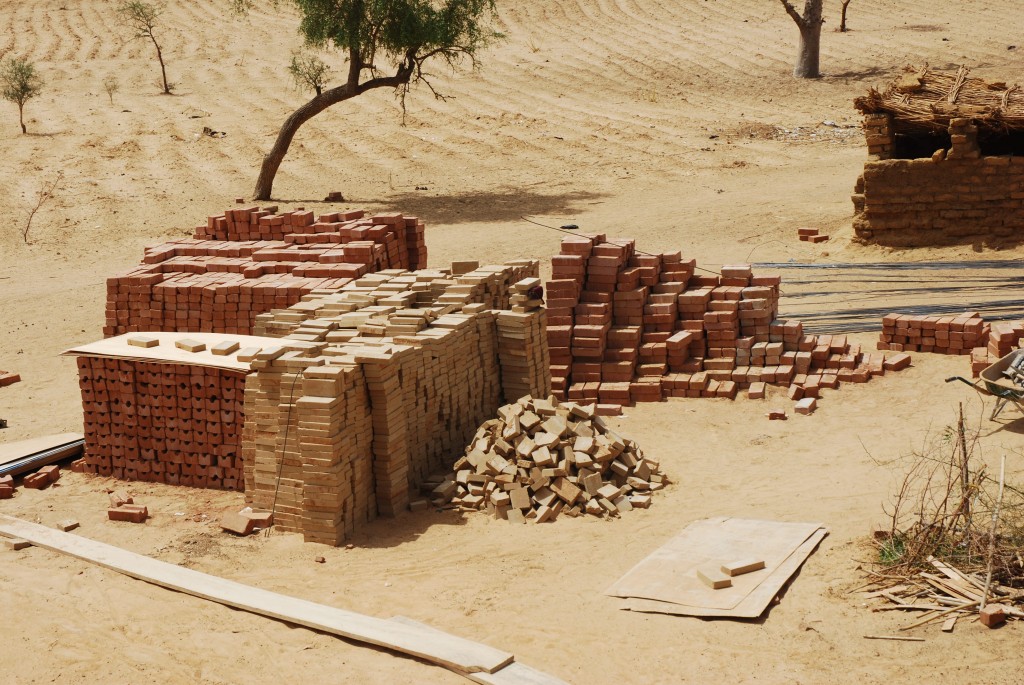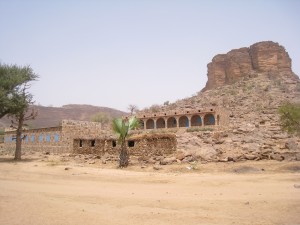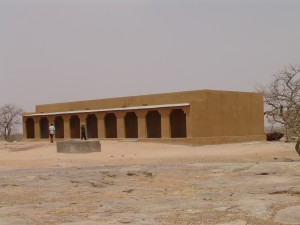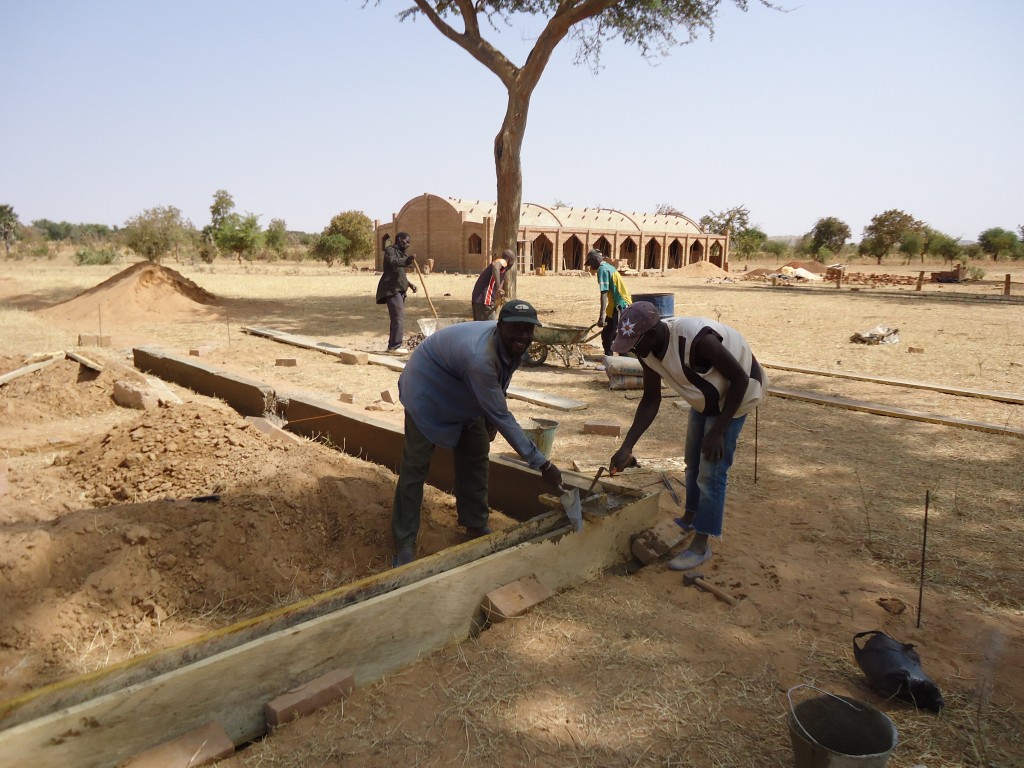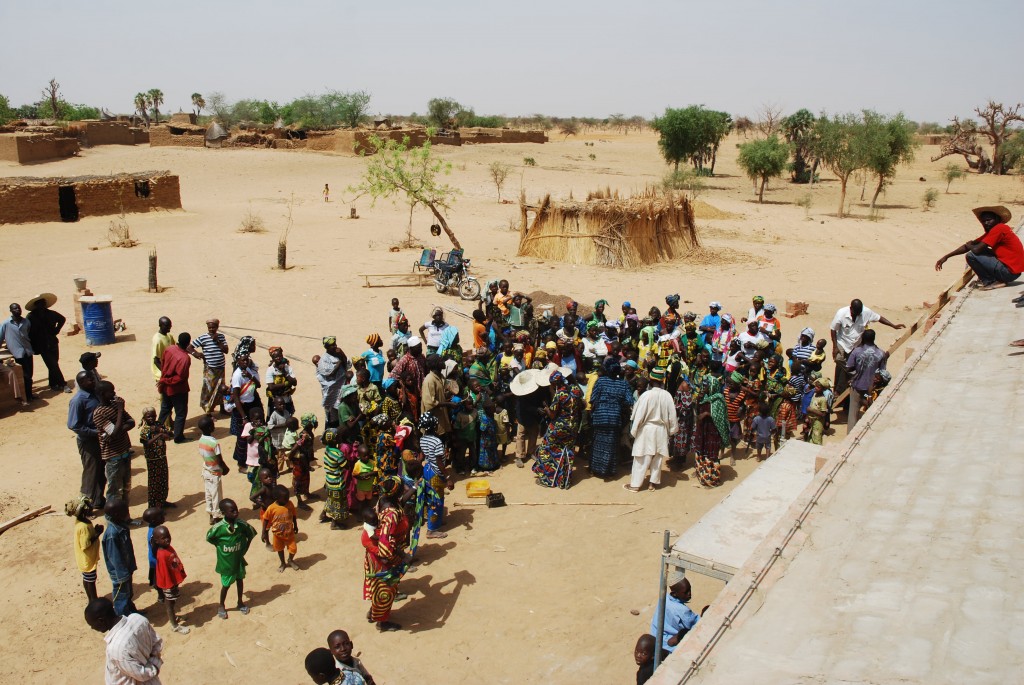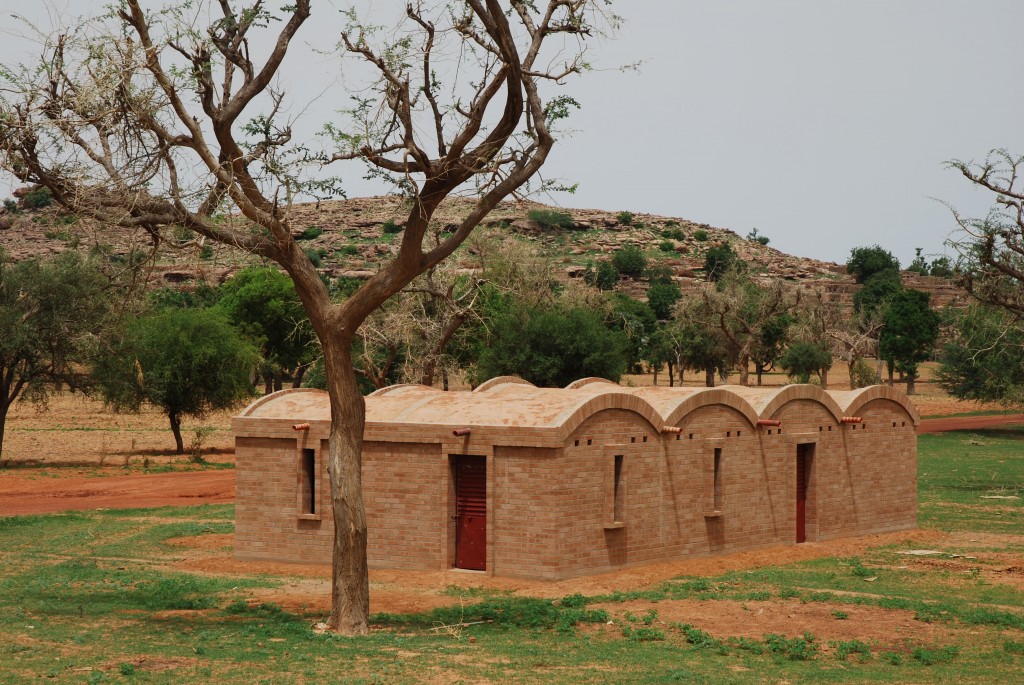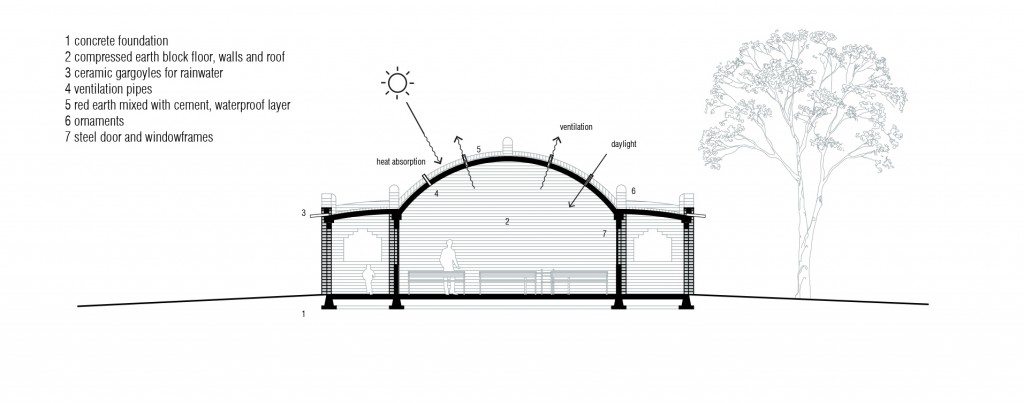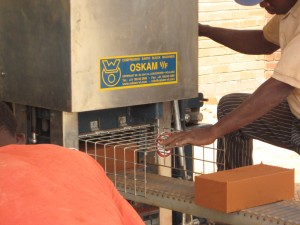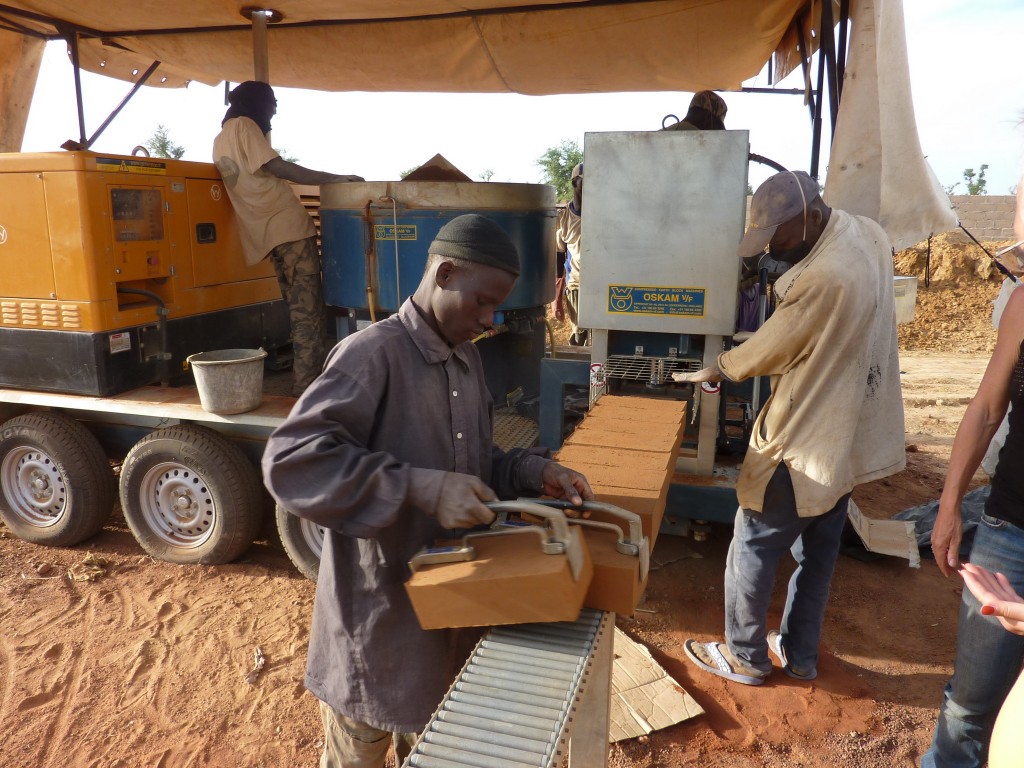The last couple of years we have been building with compressed earth blocks. This is possible because SDO acquired a mobile brick compressing machine in 2008. The knowledge and possibilities of constructing with compressed earth bricks was gained much earlier during Joop van Stigt’s research for Mamelodi (study design and research Mamelodi South Africa, 1995, Joop van Stigt in collaboration with TU Delft). In Mali the production of these bricks did not start until we actually had the opportunity to build. To this end more confidence was needed in the development of the education. The construction of the technical school in Sevaré, Mopti as well as the funding for the acquisition of the machine by Ymere have contributed to this.
Producing the stones, the composition and way of processing them are still constantly in development. The objective is to minimize the amount of cement which is very valuable and needs to be imported by Mali. Even for the compressed earth bricks, which don’t even contain 5% cement, it makes up 85% of the cost per brick.
We are already producing bricks without any cement, to be used for the indoor walls for instance. In the future we will research if the bricks can be made more stable with locally produced lime. We are also working on new ways to process the bricks. We have used them as stone floors and tiered stone roofs which all require different characteristics. In the start the bricks were mostly roduced in Sevare in order to master the technique. In 2011 we have produced on location for the first time, and this cuts back on the transportation cost considerably.
Building using compressed earth bricks demands a new approach to the construction and the architecture. It also offers many benefits; using local materials, in building physics terms it creates agreeably “cool” buildings which “move” with the climate and cool down quickly at night. The stones have a very high compressive strength, so they can be used to build bearing walls, even in multiple layers.
The stone facades need very little maintenance. At the same time these bricks take the color of their environment naturally. The construction of these schools is noticeably cheaper than using cement blocks (25%) or carved natural stones (45%) yet they are of higher quality. The facades of these schools are single walled and buttresses which give the building a rhythm. The tiered openings facing the porch follow the pressure line, and therefore naturally form the spans from penent to penent. The eaves and penents are currently still covered with concrete elements to protect them against water. The window and door frames are made of steel, and the decision was made to cancel the double opening windows and replace them with vanes.
The foundation is made of concrete, the floors are made of compressed earth bricks – half standard size – laid in herringbone link. To prevent termites from attacking the stones salt has been sprinkled under the floor and foil was used. The first schools were made with metal roofing. The objective now is to realize the roofs from compressed earth bricks as well. The disadvantage of using the compressed earth bricks is of course the necessity of the machine, as well as the limited contribution of the local population. This however fails to outweigh the benefits. Not just economical ones, this type of construction also offers a future for the community.
Nearly the entire school can be made on location, using locally sourced materials. Usage of these bricks for construction is taught to the younger generation at the technical school. Supply of the raw materials, working to produce the bricks, the supply of water and other various loose jobs should be enough to make the local population feel more connected to this type of construction. For the future SDO has decided to concentrate on the method of constructing with compressed earth bricks. So far quite a few other buildings have been realized by SDO using compressed earth bricks, such as the expansion of the Sangha encampment, houses in Sevaré, a women’s clinic and teacher’s houses with stone roofing.
Sustainability and environment
On many places clay or loam (composed of clay, salt and sand) is present in natural shape 20 to 30 cm beneath the fertile cultivatable stratum and might sometimes be extracted locally. Clay may also be dug from the building excavation or might be released as a by-product of road- and water-construction projects. This means that clay might be reused again and unrestricted provided that clay is used for brick-laying and that eventually clay is used for plastering and/or will be painted with breathing natural paint. Clay-stones don’t need treatment to be able to return to the ecological system.
Energy
The production of a clay-stone requires about 1 % of the energy needed for the production of a brick. One needs only 1 liter diesel fuel for the production of 145 clay-stones. This makes it an energy-poor production process with minimal CO2 emission. As a consequence of the permanent relative humidity of about 50 % in a clay dwelling, less energy will be needed for heating compared to a traditionally built house. In the latter the degree of humidity might increase to 80 % or more. Since a massive clay-wall is well capable to absorb warmth- and solar-energy, and releases it again in the shape of radiation-energy when temperature falls, energy is saved overall. Applying isolation of the outside façade of a clay-stone wall creates a large capacity of accumulation, having the impact of a warm house in wintertime and a cool one in summertime.
Composition
Clay-stone (clay, also called loam, salt, sand), mostly present in natural shape. Clay-limestone (clay or loam, salt, sand), an addition of 5 % lime (hydrophobic).
Shape, dimensions, weight
Shape: rectangular (Roman brick format). Dimensions: 295 mm x 140 mm x 90 mm. Weight: 7,5 kg per stone. 2.200 kg per m³.
Outward appearance
Surface-structure: smooth. Color: mostly brown (dependent on type of clay).
Mechanical properties
(dependent on type of clay) Compressive strength clay-stone 4 – 6 MPa. Compressive strength clay-limestone 6 – 18 MPa. Product strength. Per suspension point 2 to 5 kN, dependent on fixing technique.
Inflammability
Not inflammable.
Gasses, liquids, solid materials
Diffusion. Diffusion-resistance indicator: m= Liquid absorption. To the maximum 5 to 7 % of dry weight. Resistance. Clay-stone is not resistant to running water and neither to rising moisture. The clay-limestone is water-resistant.
Thermal properties
Conduction. Warmth conduction coefficient: 1 = 1,13 W / (K.m). Warmth resistance at a wall thickness of 40 cm: r = 0,354w/m².K. Specific warmth. Specific warmth: Cw = 2000KJ/m³k. In case of a massive clay-stone wall at a thickness of 40 cm, a thermal damping of 10 % applies with a delay of about 10 hours. Specific warmth-capacity. C = 1,0 kJ/kgK
Acoustic properties
Sound-isolation: sound-isolation at a wall thickness of 40 cm: 56 dB.
Electricity, magnetism and radiation
Clay will not be charged electro-statically, has a neutralizing impact on earth radiation and cosmic radiation and on GSM- and DECT radiation, will not be influenced by static magnetism fields and is not sensitive to electro-magnetic fields.
Energy conservation
Energy conservation by accumulation and moisture-regulation. A project in Denmark, in a combination with solar-energy, achieved an energy conservation of 30 %.

